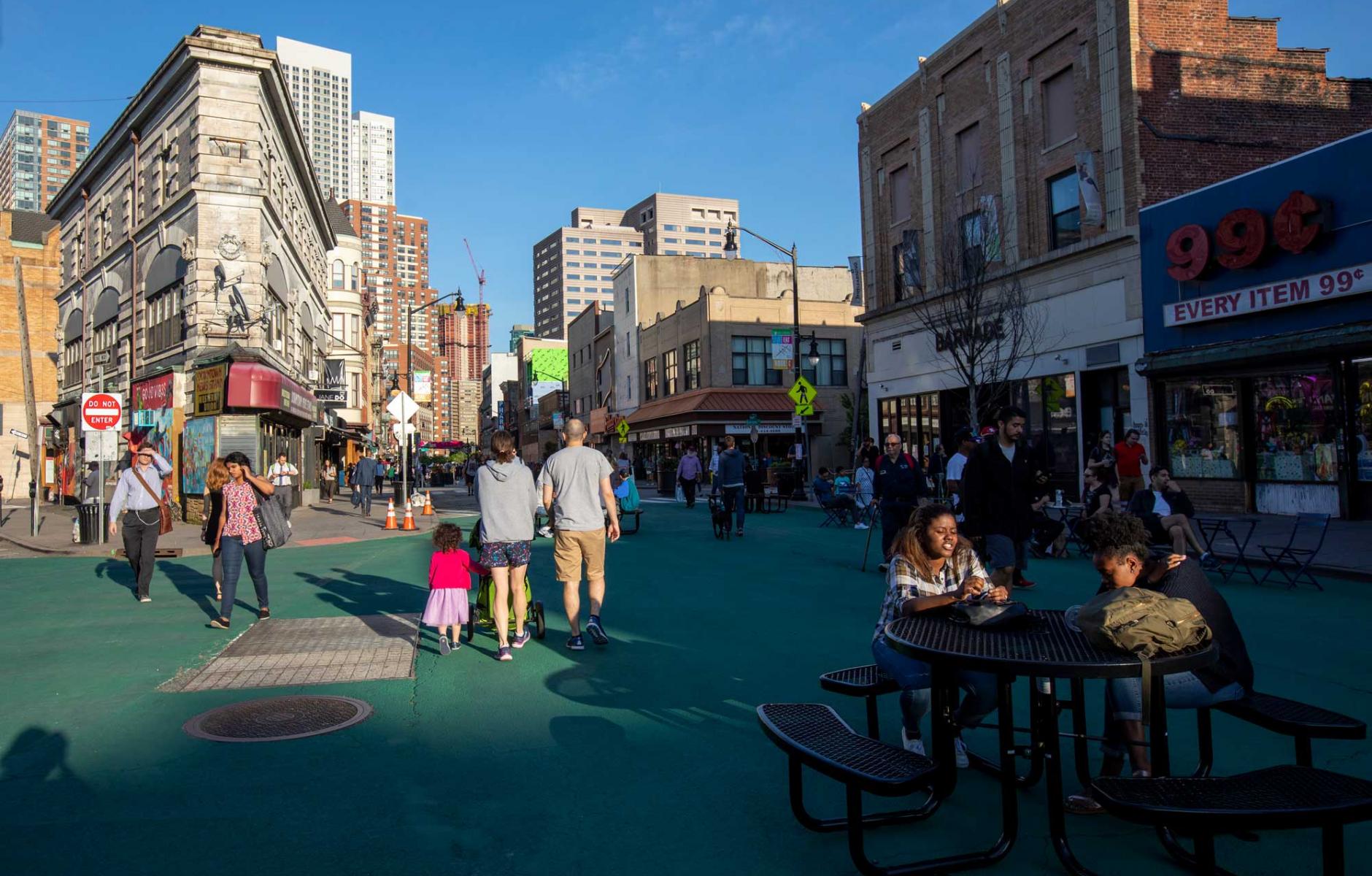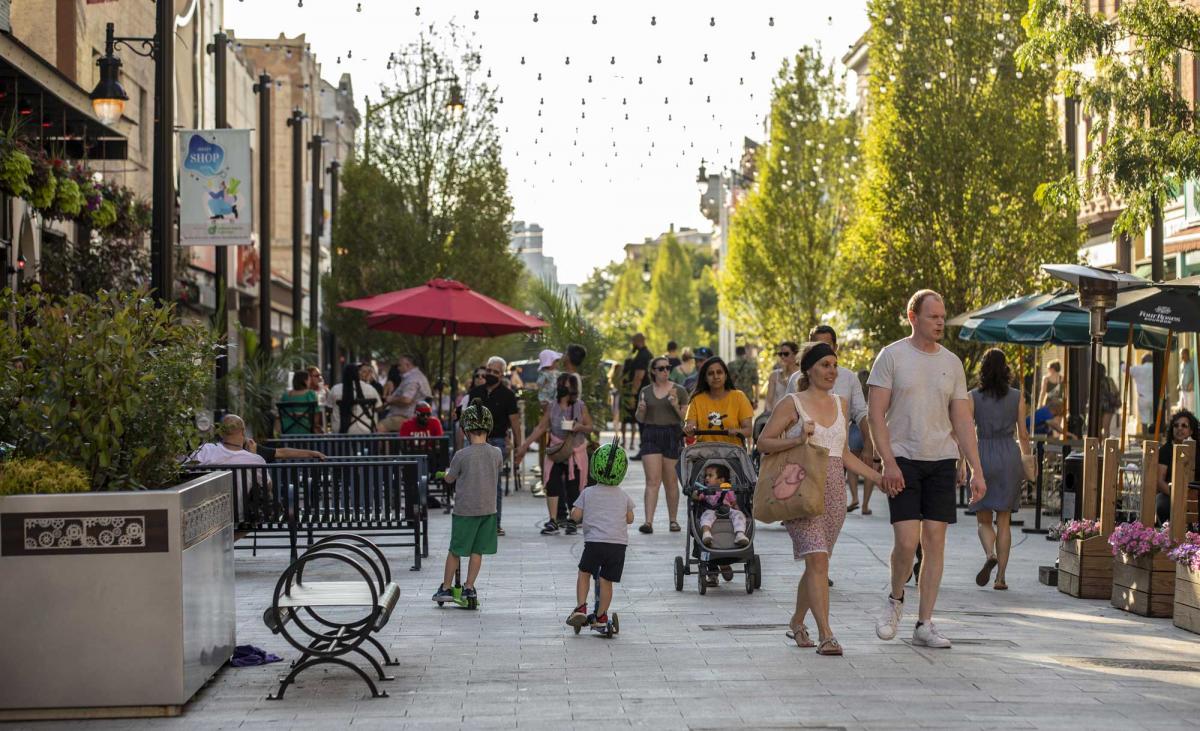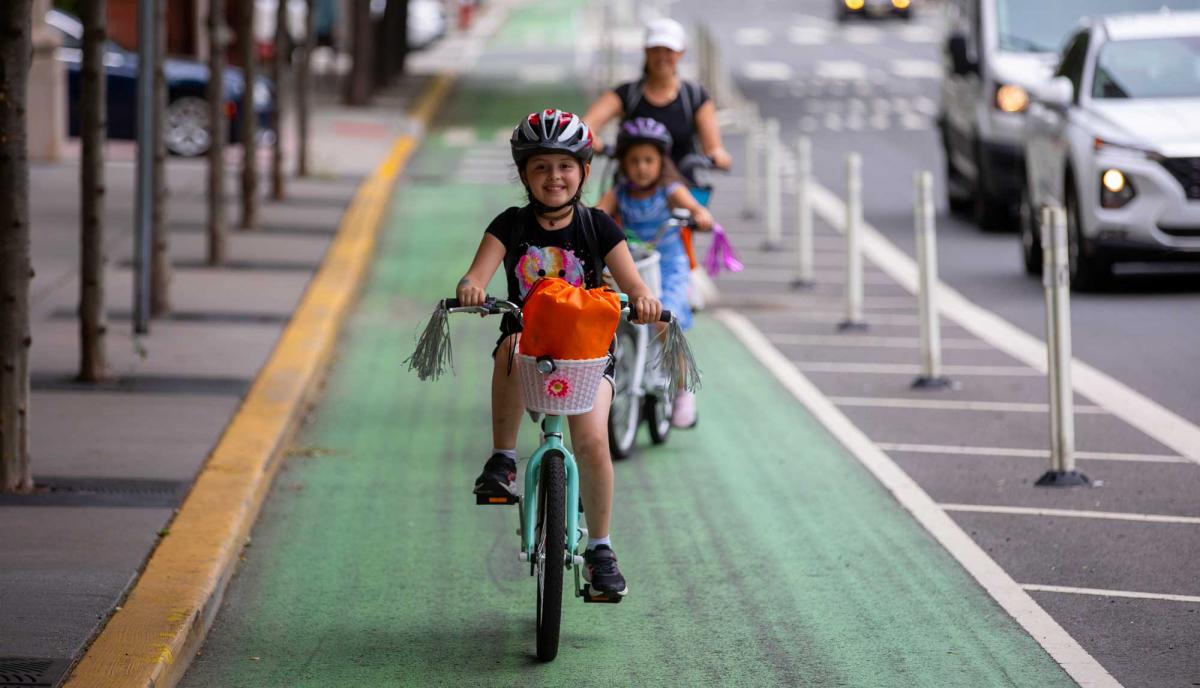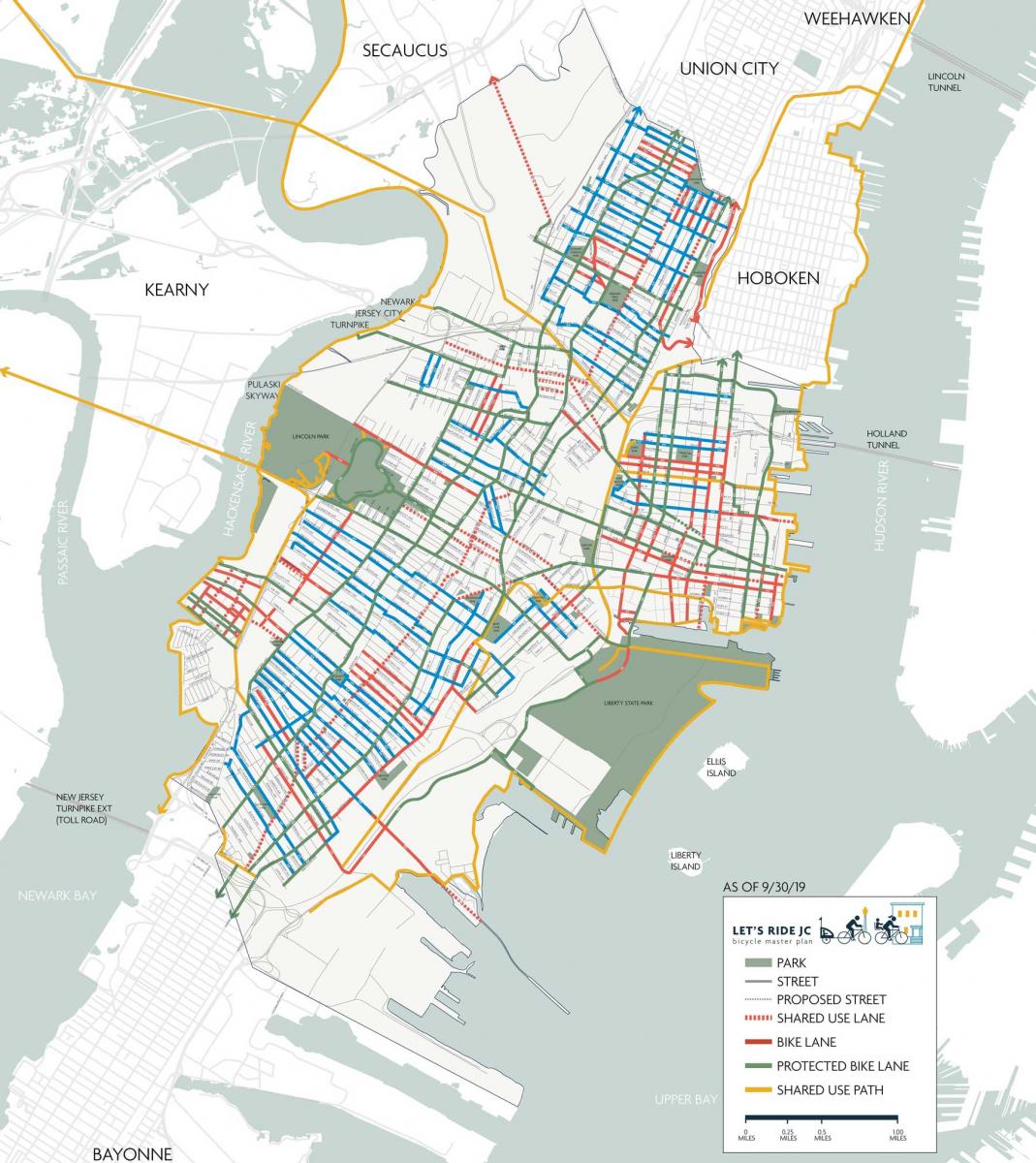
Infrastructure Department boosts the public realm
Two years ago, the City of Jersey City created a Department of Infrastructure to oversee streets, transit, parks, municipal buildings, and other facilities—an unusual and bold move helping transform the public realm.
The department and policies leading up to its creation were pivotal in implementing nearly 25 miles of protected bike lanes, carving pedestrian plazas from excess asphalt, planting more than 1,000 trees, building new parks, renovating public spaces, and creating parklets for outdoor dining.
Recent city projects have included a Bicycle Master Plan, Pedestrian Enhancement Plan, Vision Zero Action Plan, School Travel Plan, Greenway Connectivity Plan, and multiple Complete Streets initiatives.
The rapid street transformation has worked hand-in-hand with programs to fill gaps in transit service. The City introduced a regional bike share program, an on-demand rideshare service operated by Via, and a subsidized public ferry service linking Jersey City with Lower Manhattan. As a result, “Jersey City has achieved one of the highest sustainable mode shares in the US, with 57 percent of residents walking, biking, or taking transit to work,” says Barkha Patel, the director of the Department of Infrastructure. “With 99 percent of residents living within 0.5 miles of transit, 37 percent of all households are car-free.”
These programs disproportionately help low-income and minority people. “Equitable outcomes abound, as demonstrated by analysis showing that 78 percent of micro-transit users and 67 percent of Citi Bike users identify as people of color, 40 percent of micro-transit users have household incomes below $50,000, 40 percent of all rides start or end within 300 feet of affordable housing, and the most popular destinations of both services are major transit hubs,” Patel reports.

Tactical Urbanism was the key to the city moving swiftly. Jersey City’s rapid progress towards its ambitious goals stems from the embrace of Tactical Urbanism to implement transportation and public space projects, the city reports—and this was aided by the integration of city departments. Leftover tennis court paint and planters were used to build a pedestrian plaza through the heart of the downtown dating from the 17th Century. Road diets were implemented along major streets to establish the protected bike lane network using paint and vertical separation. The nimble fleet of micro-transit vans was employed to fill gaps in transit access. “Tactical Urbanism has allowed City leaders to overcome typical bureaucratic inertia by investing in quick-build, low-cost changes that are easily deployed and can be easily adjusted if not meeting intended outcomes,” Patel explains.
Mike Lydon of Street Plans, co-author of the book Tactical Urbanism and consultant to Jersey City, affirms that “no other city has applied the Tactical Urbanism methodology at the same scale and with the same speed.” A tactical road diet paved the way for renovating the city’s historic public space, Bergen Square. Two corners of the square have been used for small parking lots since the mid-20th Century. These parking lots were restored to small plazas totaling 5,000 square feet. A bus shelter and bus island were added. Turn lanes were removed. The intersection was raised.

Simultaneously, the streets have become safer for all forms of mobility. “Due to our steadfast commitment to a Safe Systems approach, Jersey City experienced zero traffic deaths on City streets in 2022, and we are committed to continuing this important work to make our City one of the most safe, sustainable and livable places in the country,” reports Mayor Steven M. Fulop.
In the first two decades of this century, Jersey City adopted new urban policies, built a light rail line, and redeveloped its waterfront into a major financial center. As a result, it has gained 50,000 in population—now topping 290,000 and approaching its level in 1940. This approach has propelled Jersey City from a declining urban area to the forefront of “Best Places to Live” lists statewide and nationally.





